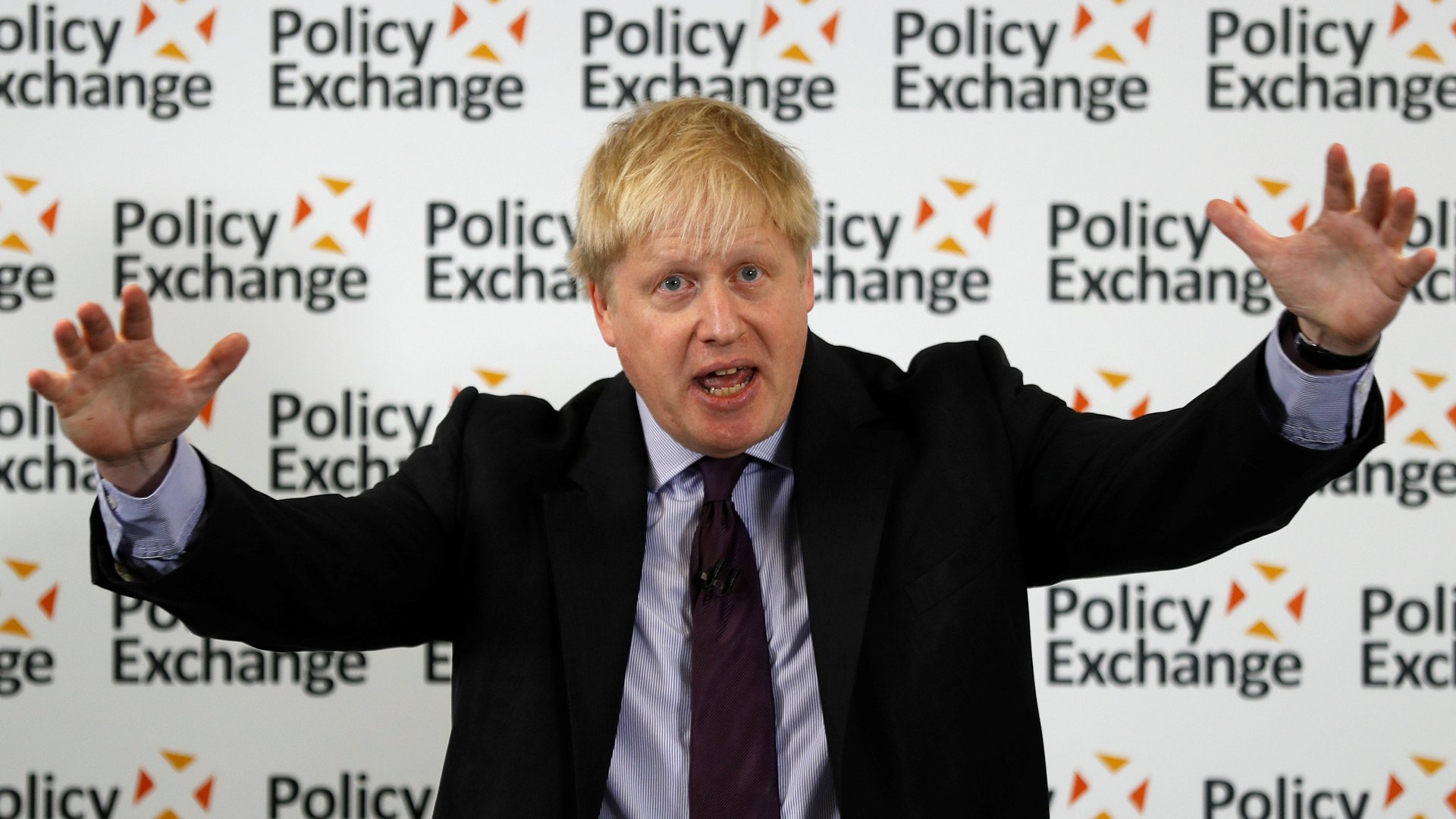These charts show why the UK will always be “lashed” to the EU
In a little over a year, the UK will officially leave the European Union. It will exit the world’s largest single market, the EU customs union, and a four decades-old union to forge its own trade agreements with the rest of the world. Yesterday, British foreign secretary Boris Johnson tried to pitch this as an exciting opportunity. “Brexit can be grounds for much more hope than fear,” he said in a speech in London.


In a little over a year, the UK will officially leave the European Union. It will exit the world’s largest single market, the EU customs union, and a four decades-old union to forge its own trade agreements with the rest of the world. Yesterday, British foreign secretary Boris Johnson tried to pitch this as an exciting opportunity. “Brexit can be grounds for much more hope than fear,” he said in a speech in London.
In order for this to be true, Johnson played down the importance of the EU to the global economy and world trade. He cited figures about how the UK’s trade with Asia—namely China, Japan, and South Korea—has grown at a faster pace than trade with the EU. (Though, he failed to mention that the EU had recently ratified a free-trade deal with South Korea, and even more recently with Japan. After Brexit, the UK will have to renegotiate deals with those countries, and 60 others, itself.)
“Those figures reflect the broader story that the lion’s share of the growth is taking place outside the EU, and especially in the Asia-Pacific region,” Johnson said.
“It seems extraordinary that the UK should remain lashed to the minute prescriptions of a regional trade bloc comprising only 6% of humanity,” he added. “And when it is not possible for us or any individual EU country to change those rules on our own.”
But with more than 500 million consumers, the EU is anything but “minute.” Its trade in goods alone dwarfs other regional trade blocs. In 2016, the North American Free Trade Agreement (NAFTA), the EU, and the Association of South-East Asian Nations (ASEAN) accounted for 58% of global trade, more than half of the world exports ($8.7 trillion), and 60% of world imports, according to the WTO (pdf). Most of this was in the EU. Regional agreements in emerging markets, like MERCOSUR (the Southern Common Market) and the Economic Community of West African States (ECOWAS), are still relatively small.
The EU has more consumers than NAFTA (484 million), but fewer than ASEAN (630 million). The sticking point for Johnson and others who share his view is that, despite which regions have the potential to increase trade the fastest (in part because they start from a lower base), proximity matters in trade. In economics, this is known as the gravity model of trade, and it’s pretty reliable.
The UK has been seeking a place in the Trans Pacific-Partnership, and the country’s trade minister has been criss-crossing the globe to China, the Middle East, Brazil, and Australia. Still, most of the UK’s trade is done with countries closer to home. Further estimates by the IMF show how trade is diminished by distance, and the effect is stronger for services than goods. This matters for the UK, because services make up 80% of its economy.
The external market for trade is more evenly split across services and goods, and for both the gravity model holds—size and distance matter. (These interactives by the UK’s statistics body make the point.) Of the world’s 50 most populous countries, the UK only exported more than £10 billion ($14 billion) in goods to three nations outside of Europe in 2016—the US, China, and Japan. (The outlier on the chart is the US.)